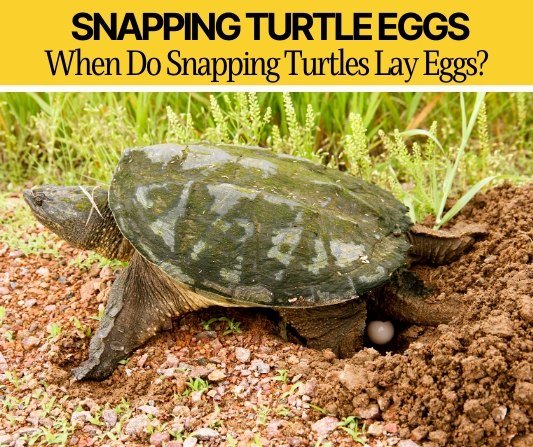 The turtle’s shell is their defense against possible predators. You may not know, but these creatures have been on earth for already more than 100 hundred million years, and their shell mostly has remained unaltered.
The turtle’s shell is their defense against possible predators. You may not know, but these creatures have been on earth for already more than 100 hundred million years, and their shell mostly has remained unaltered.
However, Have you ever wondered if turtles can feel their shells?
In this article, We Will discover if turtles have nerves in their shells and how much exactly they can feel through their shells.
Do turtles have nerves in their shells?
Yes, turtles do have nerves in their shells! It is not just a hard shell as it seems. Turtles’ shells have many nerve endings and blood vessels, making it possible for them to feel through their shells.
Some people tend to think that tortoise’s shells are like a house, a place where the turtle gets inside. The truth is the turtle’s shell is an extension of their rib cage, which means, it’s an indispensable part of their body.
Can turtles feel through their shell?
If you ever had the opportunity to own a turtle at home, you would undoubtedly see that this animal is capable of feeling the contact through its shell. Even though they don’t have the same sensibility in their shell as their skin, any touch, caress, or movement you do to their shell, they will feel it.
Turtle’s shell is much more than a protective case. It is a vital part of the turtle skeleton composed of combined bones such as ribs, the breastbone, and the spine. The part that we commonly see, the back, is called the carapace, and the bottom part is called the plastron. As mentioned previously, nerves and blood vessels run over the turtle’s shell, protecting the vital organs of the animal.

Do turtles feel their shell?
As a vital part of their body, turtles do feel their shell. Actually, they can feel more than you’ve imagined. Their shell is not an armature! Yes, they use it as a refuge to protect from predators but is a part of its body.
Like us, they are more sensitive in some places than in others. You don’t feel the same when you touch your nails as when you touch your belly, right? They don’t feel the same if you touch their shell or their legs.
If something touches the turtle’s shell, this animal will feel it in their body, underneath their carapace. If you want to touch a turtle, you should start with its shell, and if you notice the animal is enjoying it, you can consider touching its legs, neck, or head that are even more sensitive parts.
Do tortoises like their shells scratched?
Turtles are incredibly sensitive animals. As we have mentioned, their shells have nerve endings, meaning that they can feel when their shell is being touched. But the question is, do they enjoy being scratched? It is impossible to give you an absolute answer. Like us, turtles are individuals, some of them could love having their shell rubbed, and others don’t enjoy it that much.
How can you know if your turtle enjoys the contact? Reptiles show their feelings differently than mammals. A tortoise won’t beg for cuddling with you, but they may really appreciate your presence. If you notice that your turtle is watching you it is because it is interested in you. They enjoy observing their owners, and their interest is a sample of their affection.
Another sign that your turtle loves you or wants to be scratched is a long stretched neck. This sign is an essential indication of affection. If the turtle walks to you or leans into your touch and closes the eyes, you can be sure that is enjoying your company and fondness.
Do turtles feel pain on their shell?
Even though you believe the shell of a turtle is tough, it can be very fragile. If you hit their shell or do any damage to it, they will undoubtedly feel pain and could even bleed. The shell is not an invincible protective armor; It is an essential part of turtles anatomy made up of 50 different bones and connects to the spine and ribs.
Just as cats or dogs that can develop skin problems, turtles can also build problems on their shell that may cause them suffering. They can get bacterial or fungal infections or create a deformed shape that can cause cracked shells just as we broke our bones.
Here are some common symptoms which would be obvious if a turtle is in trouble.If you notice some of the following signs on your turtle, consider taking it to the vet:
- Visible breaks
- Spots
- Weird colors such as red
- Irregular flaking of the scutes
- A slimy coating
- A strong odor
- Blood from a break or crack
Turtle shell injuries can be possible for different causes, from improper care to an accidental hit. Lack of calcium, an improper diet, and an unclean environment, can also cause damage in a turtle’s shell. When symptoms are visible, it is essential to get the right diagnosis and treatment.
Can a turtle’s shell heal and grow back together?
Can the shell heal? Yes! It’s made of living materials such as keratin, and it can gradually mend itself and regenerate. The shell is covered by a thick layer of skin and tough layers of keratin ( the same protein we possess in the hair and nails). These keratin layers that are called scutes will come off as the turtle grows through shedding, and new scutes will form again to protect the animal from bruises or scrapes.
Just as our vertebrae grow with us, the same happens with the turtle’s shell. You must seek professional help if you notice any damage in the turtle’s shell. Although they can indeed heal, they can also get infections or diseases that make the healing process worse.
Does it hurt a turtle to carve its shell?
Despite the fact it is more difficult to visualize the expressions of pain in turtles than in other animals, they can suffer if they are hurt. Just as their sensitivity allows them to enjoy caresses through their shells, they can feel pain if they injure any vital part of their body.
If you carve a turtle’s shell and you think you’re not hurting it, you’re wrong. The mere fact of moving a turtle suddenly can generate pain, imagines if you cut them, they will suffer without any doubt.
They are living creatures just like you are. It is necessary to have respect and consideration for any specie and this should not be done.
Do tortoises like being handled?
Although the turtle is one of the most manipulable animals within reptiles, it does not mean that they enjoy being handled as if they were dogs or cats.
As we have mentioned, everything will depend on the species of the turtle. Earth turtles, for example, can enjoy the affections more than the others. The recommended handling time for turtles should not exceed 15 minutes and at most it should be limited to 3-4 times a week.
You must be aware that turtles are reptiles. The one that wants cuddles is you, not the animal. The turtle will always feel safer with its four legs on the ground, so try to lift it a little as possible.
More Interesting facts
How do I know if my tortoise is happy?
An anxious turtle is identifiable. They show fear by hiding in their shell or running away from you. On the other hand, you can see if they’re happy and comfortable if you notice they’re relaxed. A content turtle will just chill in the same spot and will be out of the shell. They could even go looking for their owner.
How hard is turtle’s shell?
Turtle’s shell is tough! It is challenging for bigger predators such as crocodiles, dogs, etc, to brake it with a bite. Thanks to their shells, turtles are able to survive incredible attacks.






